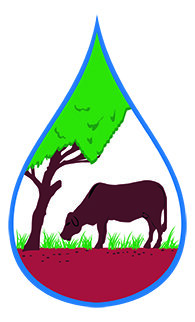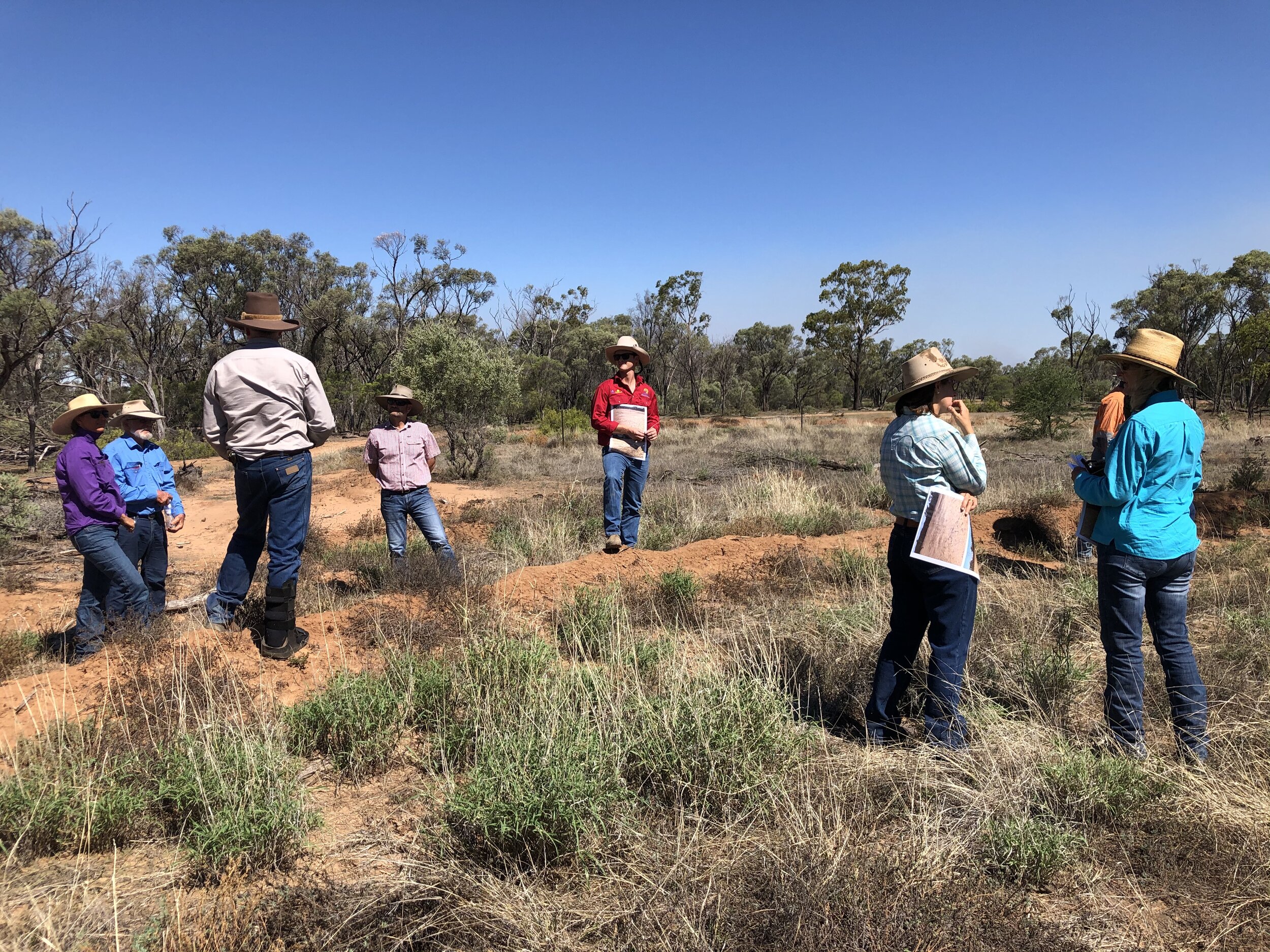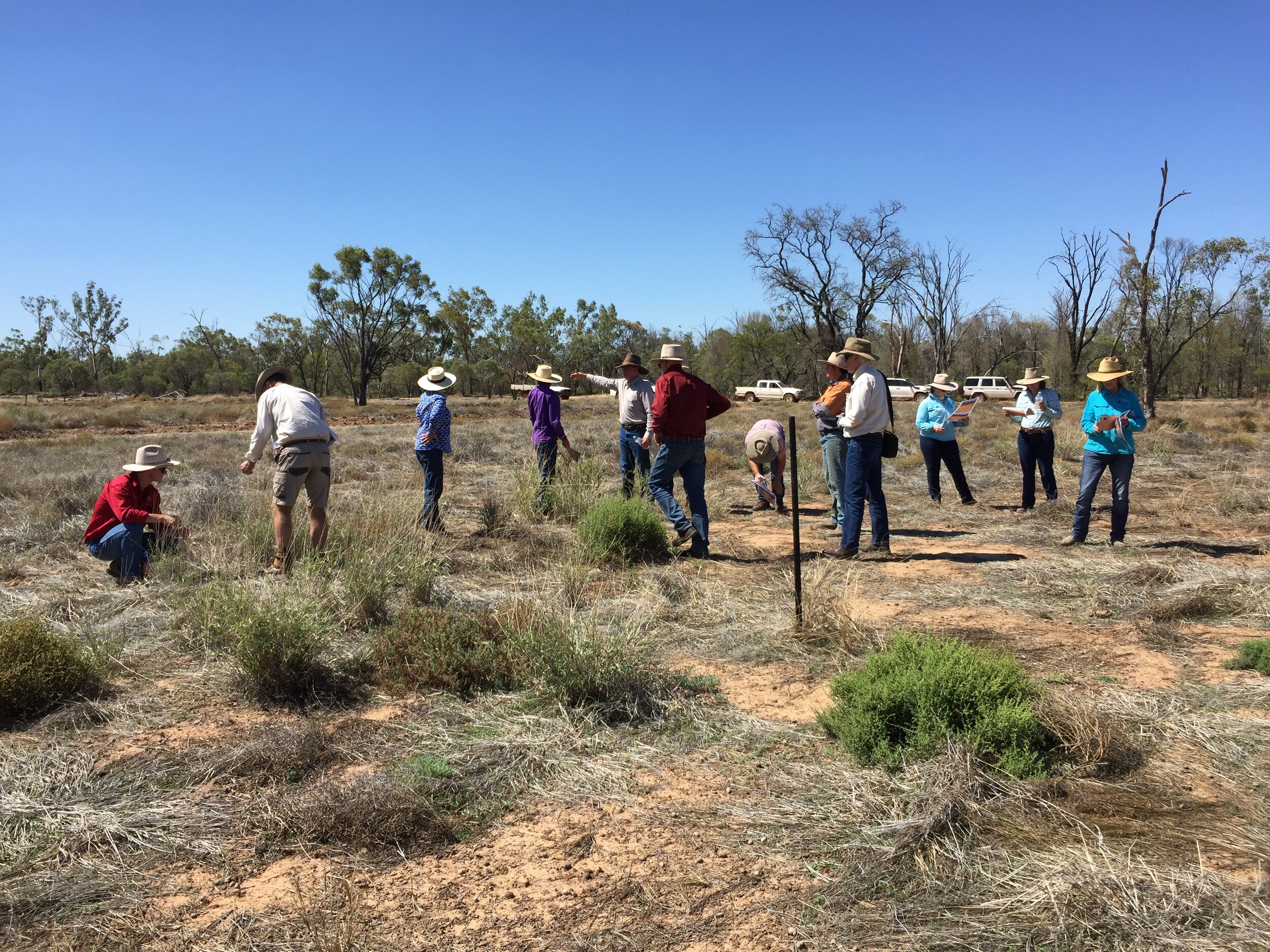Ulcanbah reaps pasture rewards
For brothers Adrian and Robert Hollingsworth, finding a way to reshape gullies and improve severely scalded country has been a steep learning curve.
“It’s a new thing looking through the Country Life looking at tractors for their ability to get through trees and move soil!” says Robert.
Adrian Hollingsworth at Ulcanbah Station discusses the use of micro catchments to improve scalding damage.
“The experience is the closest to farming that I’ve ever come!”
Robert Hollingsworth talks through the process of reshaping a gully head on his property south of Charters Towers.
The brothers run Ulcanbah Station, south of Charters Towers on the top of the Great Divide. Rainfall runoff from the property services three catchments- the Burdekin, Lake Eyre Basin and Lake Buchanan.
Originally, the pair engaged Dalrymple Landcare Committee to help with feed budgeting, but during a property visit the co-ordinator at the time noticed quite a lot of scalded country. They devised a project plan to improve water retention in these areas.
The property is run as two cattle grazing operations, with each brother and his family operating a half. The rehabilitation project was operated in a similar fashion, with Robert concentrating on a scalding issue using contour ripping, wire netting, reshaping gully heads and seeding.
Adrian has used shallow-water pondage, pitting using a front-end loader and scalloping using a grader blade.
Robert said they had hoped reshaping a gully head was a simple process.
“Originally we locked in funding around the idea of pushing the topsoil back a little using dozers and then push it all in together and make it look nice. But then Bob (Shepherd) came out to do an inspection and pointed out there’s no way of diverting water away from where the gullies are and that the top soil was very thin, with sodic soil underneath- meaning it would just disintegrate when wet and create even more of a disaster,” he said.
It wasn’t good enough to treat the systems, they needed to go to the cause. After a workshop with farm hydration planner Darren Doherty they decided ripping on contours would be a good start.
After further investigation into techniques and soil types, the Hollingsworth brothers worked out the ideal ripping depth was to the bottom of the grassroots. Robert has 25 hectares to treat, which was fenced with electric fencing while the work was carried out.
“We were working off a rip every 10 metres in the dozer and crocodiling in the middle,” he said.
At the end of January in 2019, they recorded 14 consecutive days of rainfall- totalling 80mm- a terrific opportunity to test whether the rips were retaining moisture.
“A friend who used to work at the local DAFF dropped in for a cup of tea and we showed him what we were doing and pushed a stick into the ground. And what we found with where we had ripped with the dozer to a metre and a half all the soil was wet, but if you went another dozer tracker wider, it was still hard in the middle.”
The plan changed again.
“We had an old drawn ripper here that we hooked onto a Fordston Major tractor and started marking out contours,” says Robert.
Inspecting a swallow water ponding site.
“Not being farmers, we didn’t know really what we were doing, but worked on the fact that the left-hand wheel on the way up was the right-hand track on the way back. And we did that for a while until the tractor blew a piston and we were getting a bit pushed for time. So we hired an articulated tractor off one of the neighbours that ripped a bit closer together but no water ran off- it all soaked in.”
Since the contours were built, Robert seeded after the first rain, and was surprised at the amount of Button and Mitchell grasses that popped up.
“Yeah. It's pretty spectacular all the time, but when it rains, it looks awesome.”
“It used to be a bullock depot, but over time, the quality of the country has been run down. This project has really highlighted the fact that we can retain a lot more water in our soil and therefore our pasture that would normally run off into the Burdekin. We’re not just maintaining the topsoil, we’re building it.”
Senior extension officer Bob Shepherd talking through the Ulcanbah project.
“It gives you a bit of a buzz you know- like ‘wow’! All of a sudden there is potential there and it’s pretty remarkable.” ”
On Adrian’s side of the fence, the Ulcanbah project meant using different pondage techniques to combat scalding.
“Basically, big ponds that are anywhere from a quarter of an acre, to over an acre in size. The banks are designed to break down over time once the moisture levels have increased,” Adrian says.
“But you need to have a grader parked beside it most of the time! I find them a bit problematic with having to rebuild regularly as they’re not very robust- especially if there’s cattle in the paddock!”
For most of this year Adrian has had the area fenced off to stock and has seen an improvement with soil moisture levels, despite minimal rainfall.
Adrian also seeded the area to Buffel Grass and was impressed at the growth response of it and other native pastures.
But his biggest win was the use of micro catchments, or very small ponds- enough to hold a 44 gallon drum of water each.
“We made small divots in the ground, mimicking the natural melon holes some country has,” Adrian said.
“The first one I did was with a loader; I dug the bucket in and just took out a hundred mil deep to sort of two to 300 mil deep and ended up with a small hole in the ground. I didn’t really put a bank up or anything, just kept digging holes closer to each other. I think that system works better, but there’s not really a machine designed to do it- so we spent a lot of time experimenting with different techniques.”
Adrian was impressed with the response of the pasture and that the micro-catchments felt like a more natural way to mend the scalds.
“If you have a look at what nature is already doing and mimic that you probably have a much better result than trying to force nature to take on some man-made or idea that isn't natural at all, you know, like upon which idea is just not a natural idea and never see nature itself,” he said.
“We’ve now got a lot of new skills to keep in the toolbox and we’re looking forward to a decent wet season to see how it all comes together and whether we’ve had good success.”
Inspecting a wire netting weir site.
Comparing pasture condition after contour ripping at Ulcanbah Station.







